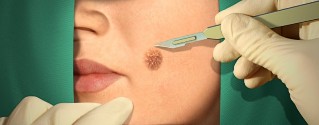
Many infections do not cause symptoms in people sanes. The immune system suppresses the activity of the virus, with the result that the person becomes a vehicle of infection. In this case, the transmission of the pathogen to other people happens even in the case of the complete clinical well-being, as the viral particles contained in the biological fluids of the patient. The Latent period of infection can be the main reason for the major expansion of the illness: the patients at the right time not to pass the exam and continue to infect other people with sense know it.
The human papilloma virus (HPV) can be called a great example of a latent infectious agent. The majority of people infected at least un type of HPV throughout their life, but clinical manifestations of the disease arise not in all cases. Distant complications from the infection, doctors take a un to increase the risk of developing malignant tumors. In addition, in patients who suffer from immunodeficiency, there is often a negative consequence of the disease. Current drugs help suppress the symptoms of the HPV infection. It is also recommended to timely vaccination.
Read more about the disease
The human papilloma virus and a pathogen that infects the skin and the mucous membranes of the organs. The main disease manifestation and the growth of tumors on the face, the genitals of the mouth and throat. In some cases, genital papillomas are formed of a non-specific areas, such as the skin of the I lower extremities advanced. The location of the warts depends on the type of HPV. In most people the infection of a door carrier state of the infection is latent, however, reduction of immunity, the virus begins to show its virulence. In some cases, the cell dl·lules immune to the pathogens, destroy independently in 3-6 months original work of art from its infestation in the body.
The infection of HPV by the Marta, more of the sexually transmitted diseases. This figure s explained by the high virulence and asymptomatic of the virus of the disease in the majority of the people. Use of the condoms do not always avoid to examine the infection, so the patient can continue the virus to spread even when protected sexual contact. At the same time, the experts effective vaccines have been developed to prevent oncogenic forms of HPV. The immunization is shown in the girls during adolescence as a defense against the virus and need to be vaccinated before first sexual contact.
Characteristics of the virus
The human papillomavirus and a DNA pathogen. Unlike the others, and micro-organisms, bacteria, virus can be active original work of art, only of the introduction to the cell and your own incorporate genetic information in the nucleus. Thereafter, the affected cell begins to synthesize proteins necessary for the Assembly of viral particles. Almost all members of the family of papillomaviruses attack only one of the included species d, and HPV infection can only occur in humans.
Know The scientists more than 600 strains (types of human papilloma virus, in which the genetic information. 40 HPV cause different types of shapes of the lesions of the mucous membranes and the skin. The un major clinical importance in the classification of the degree of oncogenetic strains. Thus, the cancer of cervix in women most often occurs during the invasion of HPV 16 and 18 types. These infectious agents do not always manifest themselves by skin changes.
HPV The affects to the layer basal to the epithelium. The pathogen can exist in the form episome is not related to the DNA of the cell, or an integrated form that is linked to the cell genome. And integrated virus that produces the necessary proteins and clinical manifestations of causing the disease. The activity of HPV in the body and not the direct cause of transformation of the tissues of a malignant, but the carriers increase virus risk factors the risk of cancer.
Methods of infection
The virus is found in the basal of the cell dl·lules of the epithelium, so that any microtrauma of the skin and mucous membranes that increase the risk of infection. In the majority of cases, HPV is transmitted during vaginal, anal or oral sexual contact. The un condom can protect only a part of the surface of the skin, however, the virus particles can still be ex: in the body through other tissues. Genital warts predispose to the transmission of the pathogen, but apparently intact skin of the carrier of the disease a is also a source of HPV.
Other forms of transmission
- The infection of the baby during the birth. Children treatment often have respiratory
- Independent transmission of the virus from one part of the body to another
- Shared use of personal hygiene items, including razors, brushes of dents and towels
- Transfusion A blood. Recent studies have confirmed the possibility of transfusion of infection.
- The surgery unsterile conditions
Despite the variety of causes of the invasion of viral, only sexual transmission of HPV has clinical significance. Other sources of infection, are characterized by a risk of low spread of the pathogen.
Risk Factors
In addition to direct modes of transmission of HPV, we also need to consider the role of risk factors. We are talking about the characteristics of the person, the lifestyle and some physical conditions.
Key risk factors for the infection
- A large number of sexual partners. Even with safe sex life sexual active sooner or later, leads to an infection.
- Age. Genital warts in the majority of cases s observed in patients adolescents and young people, while the warts of the oral cavity and respiratory system characteristic of children.
- The un weakened immune system. Patients who suffer from HIV infection or acquired immunodeficiency are at high risk of virus invasion. Also, in the field of HPV often manifests itself symptomatically original work of art of the organ transplant.
- Damage to the skin of the I mucous membranes. Microtrauma to facilitate the penetration of the virus in the layer basal to the epithelium.
- Smoking and alcoholism. Bad habits weakening of the activity of the immune system.
- Genitourinary infection.
In addition, the risk of infection a includes pregnant women. It should be remembered that the elimination of factors predisposing to the disease in an effective prevention tactic.

The clinical course
The incubation period preceding symptomatic manifestations of the disease can last for several months or not. Immunocompetent patients during this time, the body can eliminate the infection, however, spontaneous elimination of the pathogen is not always a well. It can be A person simultaneously infected with different strains of the virus. Signs of HPV infection occur under the influence of form factors unfavourable to the defence of tissues immune. Because of the recurrent condyloma periodically disappear and form again. Cancer, infection, complications will develop over the course of destinations for decades.
Consequences The possible of the disease:
- Carcinoma of the cervix – neoplasm malignant tissue epithelial. This type of cancer only associated with the human papillomavirus. With the timely vaccination, the risk of oncogenesis is reduced.
- Squamous cell Carcinoma of the anus. This complication can occur in both men and women. Primers cancer symptoms include l d anus bleeding and itching.
- Violation of urination due to obstruction of the urethra warts.
- Malignant transformation of warts on the pharynx and the oral cavity.
Of cervical cancer and the causes one of the most common death of women. Since this disease is associated with viral invasion, you need to know about him for regular exams by a gynecologist. Modern vaccines to protect against women of most types of HPV carcinogenic.
Diagnosis
A survey of warts engaged gynecologists, urologists, venereologists and dermatologists. During the first cita the doctor asks the patient about the complaints, anamnesis and to collect data to study the lesions of the skin. The manifestations of HPV identifitseerida easy, but a necessary to exclude other pathologies. To do this, you assign instrumental and laboratory test.
The necessary methods of diagnosis:
- Instrumental examination of the vagina and the cervix (colposcopy). This study to carry out necessarily in the screening of carcinoma of cervix. During the exam, the doctor can detect multiple papillomas, and areas of dysplasia epithelial.
- Biopsy obtaining tissue material in the area of the skin or mucosa changes. Cytological examination of the sample allows to identify the cell dl·lules malignant.
- Polymerase chain reaction detection of viral particles of HPV in the body. The completion of this test gives the physician the ability to determine the strain of pathogen and viral load.
- Digene-test – very accurate detection of oncogenic strains of the DNA of the human papilloma virus. The study " s used as a projection reliable.
The medication
Developed drugs against the infection, to remove HPV only allow the symptoms and prevent the malignancy of the tissues. The complete virus elimination by drug therapy impossible. Oral and topical agents appointed are, in the case of high risk of carcinogenesis, immune deficiency, and other adverse conditions. If the virus does not manifest itself by changes of directors, General guidelines, preventive measures.
A possible destination
- Salicylic acid for wart removal. It s used for the treatment of the skin of the face and genitals.
- Creams and ointments that contain immunomodulatory agent.
- Podofilox – ointment that has un effect cytostatic. The application of the medication to the affected skin leads to the destruction of pathogenic elements.
- Trichloroacetic acid for one of the chemical cautery common and genital warts. Can cause local expression of the section.
These drugs s should only be used under medical supervision. Original works of art for the removal of warts, an HPV infection can occur again and even spread to other areas.
Surgical treatment

The doctor can offer the patient surgical and minimally invasive methods of wart removal. In general, these methods do not cause complications, but in the early days of the intervention original work of art can produce tissue of bleeding.
Interventions:
- conventional surgical excision;
- liquid nitrogen, the freezing and subsequent destruction of the affected tissues;
- electric coagulation;
- removing papillomas of the un with a laser.;
- use of the radiowave of a "knife".
All procedures are performed under local anesthesia. A specialist will be able to choose the most safe method of treatment of genital warts.
Forecast
For human papillomavirus infection depends on the immune status of the patient on the particular strain of the virus. Approximately 30% of the population there is spontaneous elimination of pathogens by the active immune system. Symptomatic of the disease often is seen in pregnant women, children and the elderly immunocompromised patients.
The HPV infection is characterized by the relapse of course. Format papillomas may gradually disappear or spread to the skin of the neighbouring areas. Oncogenic strains of the virus most often that comes in the membrana mucosa of the cervix, and causes dysplasia epithelial increases the effect of the risk factors of transformation of the tissues of a malignant, such as smoking and use of oral contraceptives. Can develop The tumor 10-20 original work of art years of the invasion of the virus in the body.
Prevention
The method more reliable prevention, and the beginning of the immunization. The vaccine Gardasil that contains viral proteins and components of the auxiliary, you against HPV 6, 11, 16 and 18. If s is administered at an early age to sexual first contact, the risk of subsequent development of cervical cancer in women of less than 1%.
Additional from prevention:
- use of condoms;
- sex reliable members only;
- care of the personal hygiene;
- gynecological examination at least once a year.























